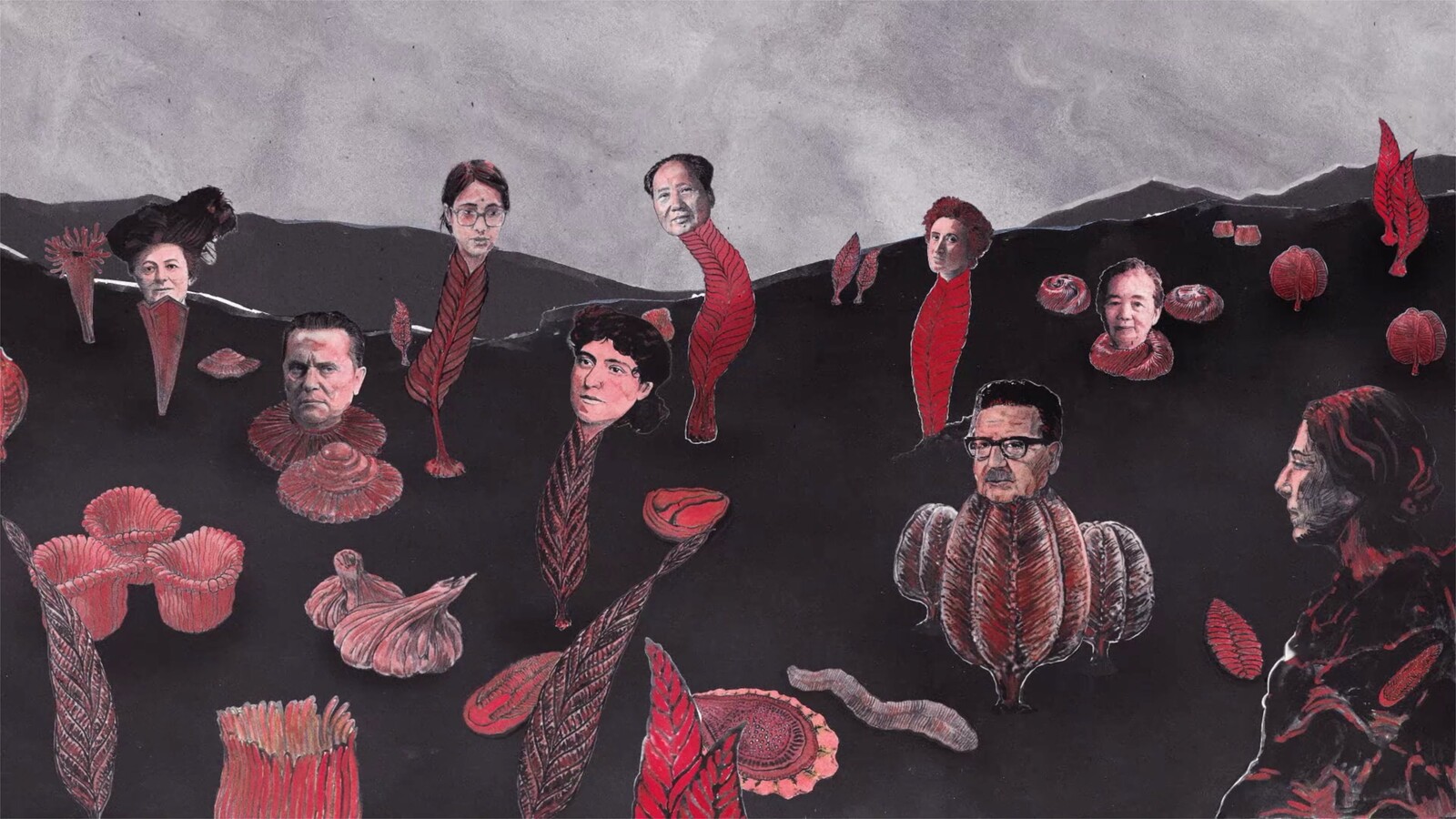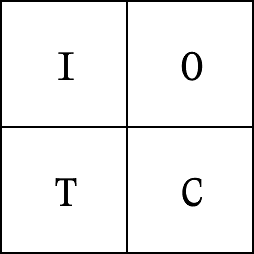Jonas Staal, Ahmet Öğüt, Bahar Noorizadeh, Nikolay Smirnov, and Keith Sanborn
The Museum of the Institute of the Cosmos is comprised of an infinite number of rooms. Each room contains a permanent exhibit. New exhibitions by Jonas Staal, Ahmet Öğüt, Bahar Noorizadeh, Nikolay Smirnov, and Keith Sanborn accompany an existing exhibition by Arseny Zhilyaev, signed by the algorithmic artist Robert Pasternak. Each of these exhibitions investigates and extends the ethos of the cosmist museum by restoring aspects of the past and present as a means of securing a more egalitarian future.
Jonas Staal showcases 94 Million Years of Collectivism (2022), a film that centers on the geological period known as the Ediacaran that precedes the Cambrian period, which for a long time was credited to be the era that birthed complex lifeforms. It was only in the mid-twentieth century that Ediacaran fossils were discovered and identified as possibly belonging to a geological time frame of its own, a fact that was finally recognized in 2004. While the Cambrian period is characterized by an explosive diversification of species with predation being the primary modus operandi, the Ediacaran constituted an interdependent non-predatory ecology. The current conditions of global capitalism are often naturalized through Neo-Darwinian narratives that uphold extractivist predation as the primal evolutionary drive. But the Ediacaran faces us with a fundamentally different collectivist ecology. Is it possible that in imagining more egalitarian forms of life, we simultaneously dream the Ediacaran?
In Ahmet Öğüt’s exhibition, Living Beings Squatting Institutions, five 3D models merge animals with the global cultural institutions they inhabit, including the Peregrine falcons of the Tate Modern, the Weimaraner dog of the Museum of Fine Arts Boston, bats of the National Museum of Cambodia, polar bears around Artica Svalbard, and cats of the Hiroshima Onomichi City Museum of Art. Whilst Öğüt highlights how mankind has built spaces to purposefully exclude others, the artist also nods to how living beings and cultures in their many different forms will find ways to coexist.
Bahar Noorizadeh’s The Red City of the Planet of Capitalism (2021) revisits proposals for a communist sprawl in the Soviet Union of 1929. For the avant-garde architects of “Disurbanism,” the sickness of the modern city and its inevitable centralized hegemony could be resolved only by the city’s destruction and dissemination across the Soviet landscape. In its place, they envisioned an energy and communication grid: a network of highways, infrastructure, mobile homes, natural resources, and public services on the scale of the USSR. Disurbanism would counter modernism’s attempts to resolve the internal contradictions of the urban setting by bringing the rural into the confines of the city.
Chthonic (subterranean) forces possess a number of resources important to humans and are inextricably linked to the solution to the issue of death and immortality. Nikolay Smirnov’s project is devoted to the study of human chthonopolitics, which turns out to be Gaia-politics: building relations with the inner forces of Earth. The exhibition has three semantic centers: (1) Different mythological and religious ideas about the world beneath the Earth’s surface, from pre-Christian pagan beliefs about the Lower World as they transformed into concepts of Christian Hell to neo-pagan mythological systems. (2) The positivist discourse of the Modern Period about the conquest of nature, penetration of the earth’s surface, and the extraction of resources. (3) Hybrid Contemporaneity in which new technologies are combined with animism.
In another new exhibition, Keith Sanborn’s Auto-Icon (2022) stages an encounter with Jeremy Bentham’s Auto-Icon, that is, his skeletal remains, padded out, and dressed in his customary attire, currently residing in a glass case in the Student Center of University College, London. Bentham, a devout materialist, nonetheless, contemplated his afterlife as a cultural and physical entity, in short: his reputation after his death. His project has the aspect of creating a first-degree relic, and yet he insists on it being only “quasi-sacred.” The film is part of a series of Sanborn’s, which includes an encounter with Lenin’s auto-icon—his embalmed corpse, on view in his mausoleum in Red Square—as well as the contemplation of the filmmaker’s own mortality in the form of an extended gaze at the somnolent, yet living body of his own father, now 100 years old.
About the Museum of the Institute of the Cosmos
The Museum occupies a central place within the cosmist worldview as an institution dedicated to the preservation, conservation, and restoration of the past. It is a singular place in human society where a broken appliance, a damaged picture, a text fragment, a ceramic shard, or unfinished poem are not discarded, but systematically preserved and maintained.
The cosmist museum is encyclopedic and nonviolent. As a collection of everything, its mission is to restore life, not take it. Nikolai Fedorov writes that the museum is related to the school and the observatory. The ancestral memory it preserves in the form of artifacts, botanical specimens, animal and human remains is mirrored in the constellations of the stars. The museum is related to ancient temples and the knowledge it transmits is astronomical. According to Fedorov, the museum will be the site of resurrection once its technology of restoration is radicalized to restore life. “If a repository may be compared to a grave, then reading, or more precisely research, is a kind of exhumation, while an exhibition is, as it were, a resurrection”. —Nikolai Fedorov, The Museum, its Meaning and Mission, originally published in 1906.


